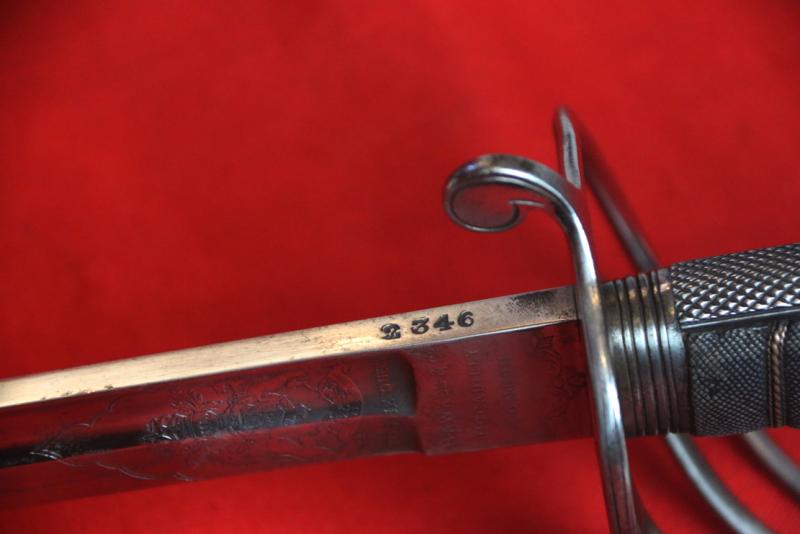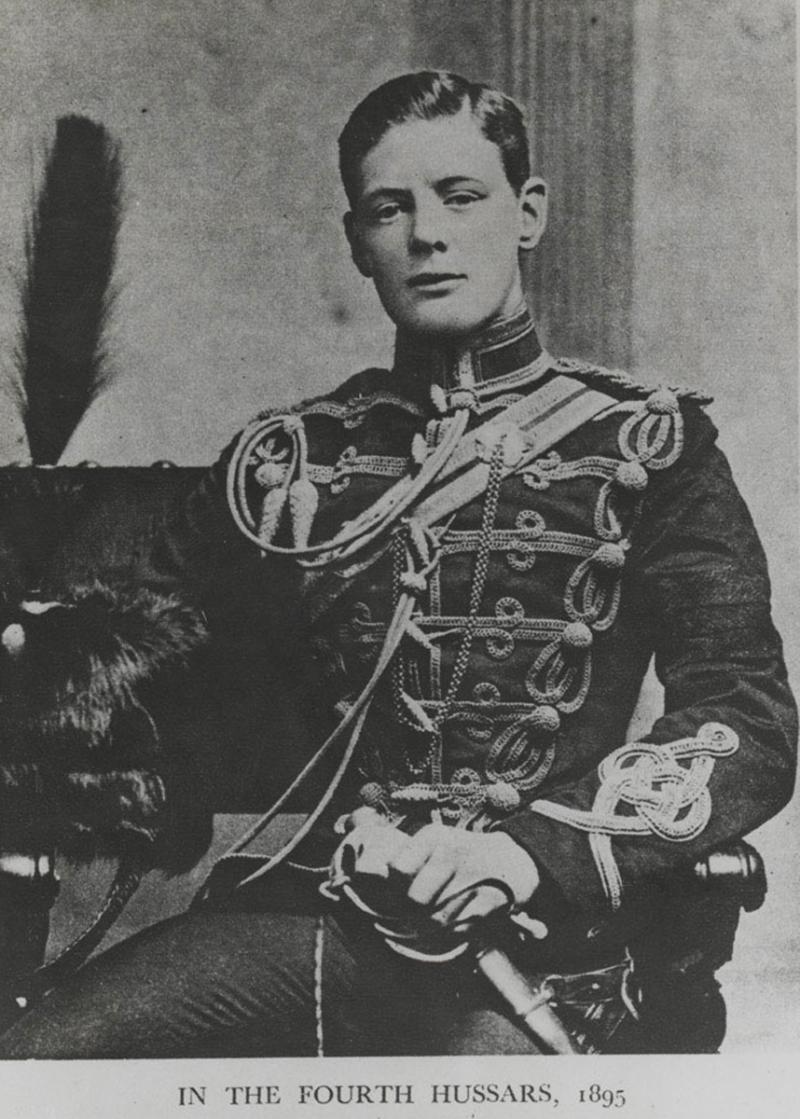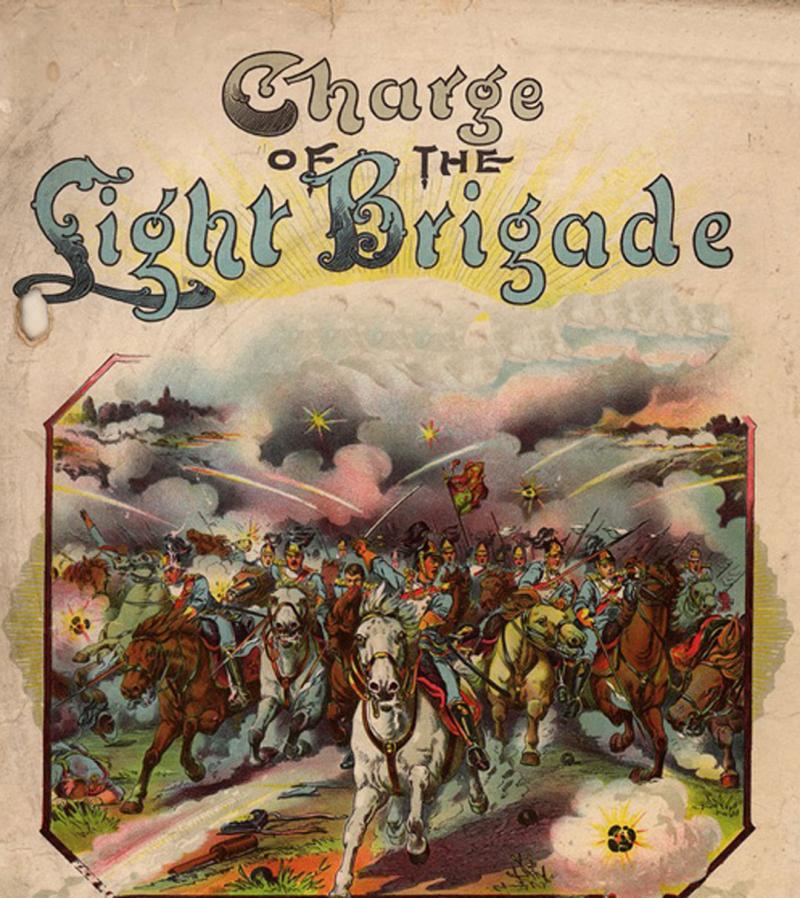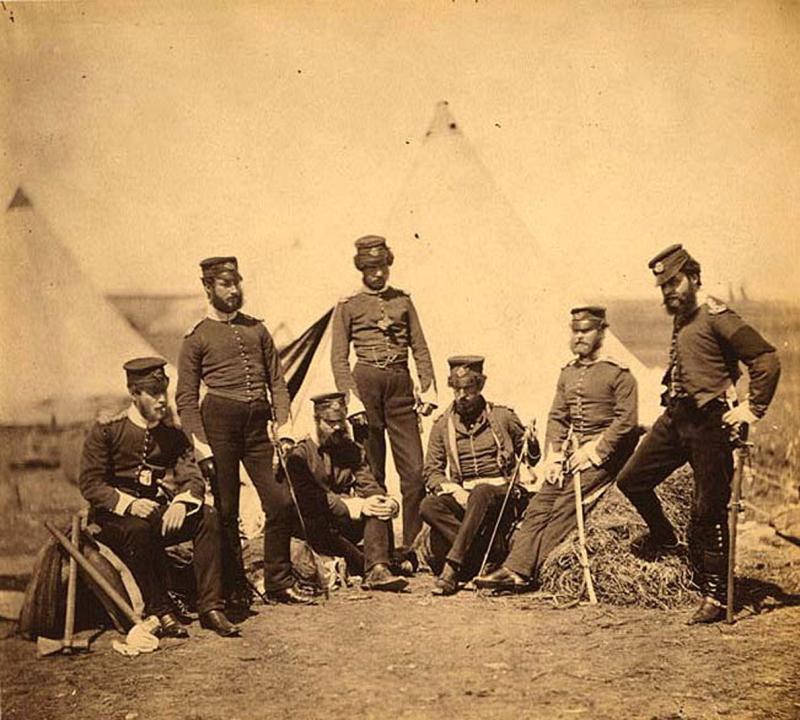An Exceptional 1821 Pattern Victorian British Cavalry Officer's Combat Sabre By Hawkes & Co. Piccadilly. Fully Etched Deluxe Quality Blade. The Regulation Pattern Used in the 'Charge of the Light Brigade' in the Crimean War.
Bearing Queen Victoria's VR cypher with crown. Regulation three bar steel hilt and sharkskin bound wired grip. Slightly curved blade, bearing the maker's name, address and Royal Warrant of Hawkes and Co.
The very type of Hussar's and Lancer's sabre as used by British Cavalry Officer's in the ill fated charge in the Crimean War against Russia. All steel three bar steel hilt, Full original wire binding over complete fish skin grip. Overall in fine all bright patina. Sadly, of course, we have no way of knowing if this sword was ever used by a specific officer in the charge, however it is absolutely used at the time and is the type used by all the serving Cavalry officers The Cavalry officers actually used two types of sword, this, the 1821 pattern, and a few officers also used the mamaluke pattern sword In the Crimean War (1854-56), the Light Dragoons were in the forefront of the famous Charge of the Light Brigade, immortalized by Tennyson's poem of that name ("Into the valley of death rode the six hundred").
The regiments adopted the title hussars at this time, and the uniform became very stylish, aping the hussars of the Austro-Hungarian army. But soon the blues and yellows and golds gave way to khaki as the British army found itself in skirmishes throughout the far-flung Empire, in India and South Africa especially.
In 1854 the regiment received its orders from the War Office to prepare for service overseas. Five
transport ships - Harbinger, Negotiator, Calliope, Cullodon, and the Mary Anne – embarking
between the 8 May and 12 May, carried 20 officers, 292 other ranks and 298 horses. After a
troubled voyage, the regiment arrived at Varna, Bulgaria on the 2 June. On the 28 August the
entire Light Brigade (consisting of the 4th Light Dragoons and 13th Light Dragoons, 17th
Lancers, the 8th Hussars and 11th Hussars, under the command of Major General the Earl of
Cardigan) were inspected by Lord Lucan; five men of the 13th had already succumbed to cholera.
On the 1 September the regiment embarked for the Crimea - a further three men dying en-route.
On the 20 September the regiment, as part the Light Brigade, took part in the first major
engagement of the Crimean War, the Battle of the Alma. The Light Brigade covered the left
flank, although the regiment’s role in the battle was minimal. With the Russians in full retreat by
late afternoon, Lord Lucan ordered the Light Brigade to pursue the fleeing enemy. However, the
brigade was recalled by Lord Raglan as the Russians had kept some 3,000 uncommitted cavalry
in reserve.
During the 25 October the regiments, the Light Brigade, took part in the Battle of
Balaclava and the famous Charge of the Light Brigade.
The 13th Light Dragoons formed the right of the front line. The 13th and 17th moved forward; after 100 yards the 11th Hussars, in the second line, also moved off followed by the
4th and 8th. It was not long before the brigade came under heavy Russian fire.Lord Cardigan, at the front of his
men, charged into the Russian guns receiving a slight wound. He was soon followed by the 13th
and 17th. The two squadrons of the 13th and the right squadron of the 17th were soon cutting
down the artillerymen that had remained at their posts. Once the Russian guns had been passed,
they engaged in a hand-to-hand fighting with the enemy that was endeavouring to surround them
by closing in on either flank. However, the Light Brigade having insufficient forces and suffering heavy casualties, were soon forced to retire. The last picture in the gallery is of Capt. Louis Edward Nolan (January 4 1818-October 25 1854), who was a British Army officer of the Victorian era, an authority on cavalry tactics, and best known for his controversial role in launching the disastrous Charge of the Light Brigade during the Battle of Balaclava. He was the first casualty of that engagement. His identical sword can be plainly seen in that painting. This sword has no scabbard at present, however, it may well become available, as the last owner had it but it was lost in their home, if it is found, and if required, it will be supplied by us at its cost price to us.
Overall in excellent condition for age.
The regulation pattern of sword used by British cavalry officer's, such as all the hussar and lancer officer's that took part in the 'Charge of the Light Brigade' in the Crimean War.
We show in the gallery a photograph of Winston Churchill holding his sword around the time he was in the Charge of Omdurman, another with Lord Cardigan of the Charge, holding his identical sword, and a photograph by Fenton, taken in the Crimean of officers of the Light Brigade all with their identical sword.
Code: 25050
895.00 GBP










